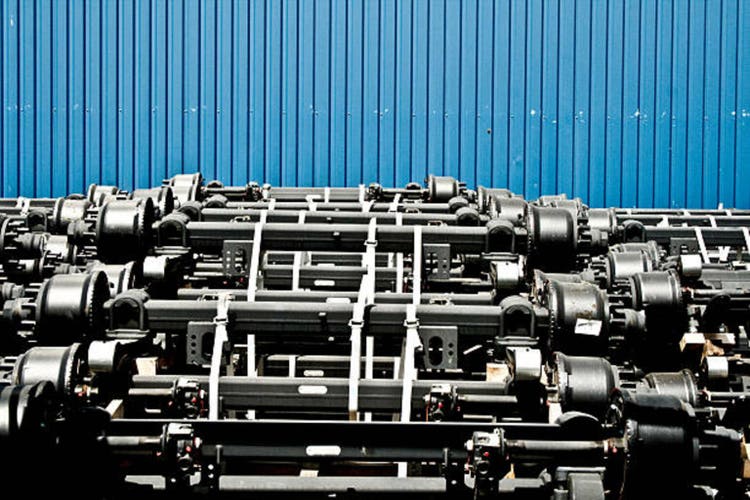Yum China, which operates almost 17,000 KFC and Pizza Hut outlets across the world’s second-largest economy, posted rising revenues and profits for the most recent quarter, growing even as Chinese consumption continues to be sluggish and as Trump’s trade war continues to shake up global economies.
Yet the company’s Hong Kong-traded shares plunged by 6% on Wednesday, despite the solid financial results. Shares later pared back losses, but are still down by 3% since the earnings release.
Analysts point to one possible reason for the mismatch between Yum China’s strong results and investor unease. China’s Big Tech companies are locked in a brutal price war in the country’s fiercely competitive food delivery space, promising billions of dollars worth of subsidies to merchants and consumers to win market share.
That’s shaking up not just the food delivery market, but the companies that make the food as well—like Yum China—even as deliveries surge in the short-term.
Investor fears could be partly due to worries that “the delivery subsidy might not continue,” wrote HSBC analysts in a Wednesday report. “Once the subsidy ends, [Yum China’s] earnings will be negatively impacted.” For now, HSBC maintained its “buy” rating on Yum China’s stock and increased its target price.
CEO Joey Wat called “intense delivery platform competition” the “biggest dynamic” in the quarter, in a post-earning briefing with analysts.
It’s the latest sign of how price wars and aggressive discounting—decried by both officials and business leaders as “irrational consumption”—is shaking investor faith in China’s largest companies.
Food delivery wars
JD.com’s entry into the food delivery market has shaken up a sector dominated by Meituan and Alibaba-owned Ele.me. In February, JD unveiled JD Takeaway, promising zero commissions for merchants who joined early. Founder Richard Liu has made food delivery a key part of the company’s strategy, particularly as the e-commerce giant has floundered compared to its Big Tech peers. Liu even donned a uniform to deliver meals himself.
The fierce battle has worried both investors and Chinese officials. Shares in both Meituan and JD.com are down by around 25% over the past six months. Alibaba is up by 10% over the same period, yet shares are still below their March peak.
Both JD and Alibaba have promised subsidies worth billions of yuan to both merchants and consumers. Transactions on these platforms surged from 100 million daily orders at the start of the year to 250 million by mid-July, according to the South China Morning Post.
In mid-July, the State Administration for Market Regulation, China’s top markets regulator, summoned all three companies to “encourage rational competition” and “foster a healthy ecosystem.”
Chinese officials are starting to push back against aggressive price wars across China’s economy, particularly in the cut-throat EV sector. Officials have termed this excessive competition “involution,” meaning that companies are investing increasing resources to grab market share without receiving a proportional return.
On August 1, all three food delivery companies—Meituan, JD and Alibaba—agreed to a truce in their price war.
Yum China’s earnings
Yum China was born from Yum Brands’ decision to spin off its China operations in 2016. Yum China now operates 16,798 outlets across the world’s second-largest economy, primarily KFC and Pizza Hut outlets. (Yum China is No. 373 on the Fortune 500, making it one of the few companies on the list of the U.S.’s largest companies by revenue that makes most of its revenue overseas)
Yum China reported $2.8 billion in revenue for the most recent quarter, a 4% increase year-on-year. The company reported $215 million in quarterly net income, a 1% increase. The company is embarking on an aggressive expansion into China’s second-tier cities, hoping that affordable offerings like coffee and smaller pizzas will win over lower-income consumers.
Yet amid the strong results, chief financial officer Adrian Ding pointed out that Yum China’s cost of labor inched up by 0.9 percentage points over the last quarter, reaching 27.2%, which he blamed on “higher rider costs” due to a surge in deliveries.
Delivery is the largest source of sales for Yum China, compared to dine-in and take-away. Delivery sales grew by 17% year-on-year during the first half of 2025, particularly among its emerging businesses like coffee.
On Yum China’s earnings call, analysts asked what subsidies and the food delivery price war meant for the company’s earnings.
Ding declined to share the specific share of subsidies paid by Yum China versus the platform operators, though suggested that larger merchants like Yum China “enjoy more favorable subsidy arrangement and subsidy split.” He also affirmed that Yum China expects margins to remain steady, guidance which takes delivery subsidies into account.
Wat referred to a previous instance of fierce subsidy competition in 2017, the last bout of fierce competition between Meituan and Alibaba. “One lesson we learned is [that] we don’t buy sales,” Wat said. Yum China’s Pizza Hut was “a bit aggressive” in pursuing subsidies, “but then by 2018, when the subsidy was pulled, the business sales suffered quite a bit.”
“We need to protect the price integrity,” she said. “Otherwise it just does not work. The numbers don’t work.”
This story was originally featured on Fortune.com

 2 hours ago
1
2 hours ago
1











 English (US) ·
English (US) ·